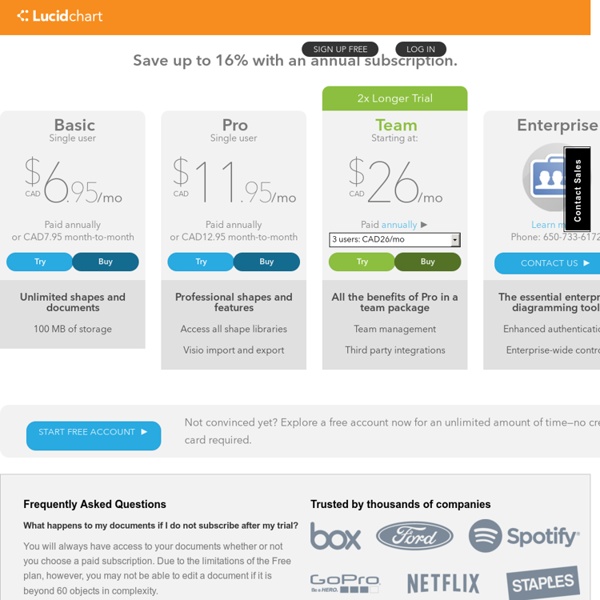



https://www.lucidchart.com/users/registerLevel?tP=1&t4=A&t10=A
Related: FacilitationThe Five Behaviors of a Cohesive Team™ Facilitation Kit Teamwork is the Single Most Untapped Strategic Advantage Introducing The Five Behaviors of a Cohesive Team™ based on Patrick Lencioni’s best selling book The Five Dysfunctions of a Team. Team data is combined with an Everything Disc profile to help the participants link team behavior with style preferences and priorities It has a simple goal: To create a learning experience that helps individuals and organizations discover what it takes to build a truly cohesive and effective team. Whispers — The Thiagi Group (First published, July 2001) You can use Whispers as a follow-up activity to any interesting experience among a group of friends. It's my favorite game to informally debrief my colleagues at the airport or during the drive back after a conference. Purpose
untitled The point of having a good synergistic team is so that when times are tough, the team really pulls together and are able to pull themselves out of tremendous challenging situations. Other reasons for having team and trust building activities as a regular part of your meetings and or organizational culture initiatives include: – People will enjoy coming to work because they feel valued and appreciated– Projects get done more expediently– Creativity abounds when the solutions are not apparent– It is much less work for you, the leader, because people are not complaining about each other but rather are supporting one another– Work feels like fun rather than a chore. Passion abounds Here are ten ways we’ve “borrowed and begged” from other colleagues or created ourselves to help your creative juices start flowing, whether you are the outside or inside facilitator or a leader that needs to be more vigilant about creating conditions for great teams. Here’s one I created:
untitled MastheadOur mission statement, copyright notice, and cast of characters. Training DesignContinuous Improvement of TrainingKeep on tweaking. Structured SharingGuidelinesBe inclusive. FramegameThirty-FiveEverything you'll ever need to know about this framegame. Guest GamerInterview with Christie StearnsHer approach to training makes cents! Another FramegameRapid Fire by Christie SternsHandling objections. The practice of Dialogue Mapping – Part 1 Hiya For those who do not regularly read CleverworkArounds, I have a bit of a split career-personality where half my working life is spent as a SharePoint practitioner and the other half as a sort of facilitator, based around the craft of dialogue mapping. This series of articles will delve a little deeper into dialogue mapping and how I have used it. I previously introduced the topic of IBIS and Issue Mapping to a SharePoint audience in the “One best practice” series of posts.
untitled By Michael Wilkinson, CMFManaging Director, Leadership Strategies, Inc. Author, The Secrets of Facilitation and The Secrets to Masterful Meetings If you facilitate cross-functional teams within a large organization or community task forces assembled to address a specific issue, it is likely that there will be a large percentage of your team members who are unfamiliar with one another. untitled By Michael Wilkinson, CMFManaging Director, Leadership Strategies, Inc. Author, The Secrets of Facilitation and The Secrets to Masterful Meetings In today’s business world, many meetings take place over telephone lines, through the Internet, using video conferencing and via other technology vehicles that allow participants to be in different geographic areas. While these vehicles can reduce the cost of meetings, they can also present significant challenges to the meeting leader.
untitled Sometimes referred to as virtual conferencing, Virtual Meetings are the hosting of a meeting in a virtual environment and not face-to-face. Virtual meetings use technology to allow groups to collaborate through an Internet connection. These virtual meeting platforms generally have an audio and video component and are not simply a voice connection. Virtual meetings are easy to conduct. All that is needed for participants at the basic level is: an Internet connection, Audio (through computer speakers and microphone, or telephone), Webcam . When it comes to virtual meeting event tech, there are several categories and types of tools you can use.